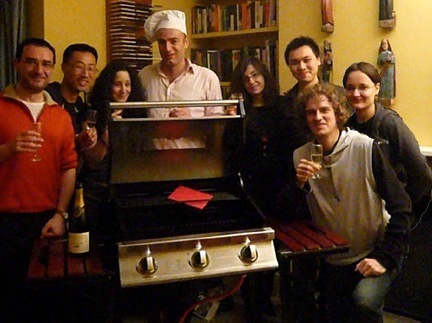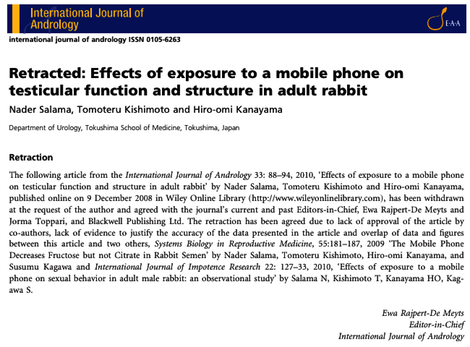Marc Abrahams's Blog, page 581
April 5, 2012
Spence's switcheroo of the sounds of bacon and eggs
Smithsonian magazine writes about Ig Nobel Prize-winner Charles Spence (who performed at our recent show in Leeds, on this year's Ig Nobel Tour of the UK) and some of his research:
Charles Spence is multisensory researcher in London, who has been messing around with how sounds modify flavor. "We've shown that if you take something with competing flavors, something like bacon-and-egg ice cream, we were able to change people's perception of the dominant flavor—is it bacon, or egg?—simply by playing sizzling bacon sounds or farmyard chicken noises."
The 2008 Ig Nobel Prize in nutrition was awarded to Massimiliano Zampini of the University of Trento, Italy and Charles Spence of Oxford University, UK, for electronically modifying the sound of a potato chip to make the person chewing the chip believe it to be crisper and fresher than it really is. [REFERENCE: "The Role of Auditory Cues in Modulating the Perceived Crispness and Staleness of Potato Chips," Massimiliano Zampini and Charles Spence, Journal of Sensory Studies, vol. 19, October 2004, pp. 347-63.]
Here is a photo of Professor Spence (wearing a chef's hat) and some of his colleagues:
(Thanks to investigator Liz Chapin for bringing this to our attention.)

The hardness of Nintendo, calculated

Computer scientists will, perhaps more deeply than others, appreciate the hardness of several computer games produced by the entity called Nintendo:
"Classic Nintendo Games are (NP-)Hard," Greg Aloupis, Erik D. Demaine [of whose recent work, more here], Alan Guo, arXiv:1203.1895v1, March 9, 2012.
"We prove NP-hardness results for five of Nintendo's largest video game franchises: Mario, Donkey Kong, Legend of Zelda, Metroid, and Pokemon. Our results apply to Super Mario Bros., Lost Levels, and Super Mario [pictured here] World; Donkey Kong Country, all Legend of Zelda games except Zelda II: The Adventure of Link; all Metroid games; and all Pokemon role-playing games. For Mario and Donkey Kong, we show NP-completeness. In addition, we observe that several games in the Zelda series are PSPACE-complete."
(Thanks to investigator Josh Kroll for bringing this to our attention.)

April 4, 2012
Dirty blackboards, psychologically
Blackboard research, then and now:
"The Blackboard as an Analytic Accessory," G.V. Hamilton, Psychoanalytical Review, vol. 20, 1933, pp. 388-400. The author explains: " My acceptance of Freud's theory of mind came slowly. I now know that over a period of nearly two decades I was unconsciously resisting its implications and that facts which seemed to support alternative theories were to me what a favorable new witness is to an attorney for the defense… To put it briefly, since July, 1928, I have been steadily occupied with experiments in analytic method which have been aimed at overcoming some of the difficulties which stand in the way of proceeding with certain types of patients in accordance with the technical principles laid down by Freud…."
This deep analytical work continues, in a sense today, on the blog Blackboards in Porn. Here is one of the many objects they analyze:
H2N2O2(HO-N=N-OH)
+
H4SIO4(SI(OH)4)
H2O + H2OSO4
H3PO3(HPO(OH2))
H2SO4 => SO4
H2OSO4 = H
Chemistry – A-level/undergraduate level
This is a frustratingly inconsistent approach to writing chemical formulae. On the one hand the teacher has gone to the trouble of also using structural formulae to improve clarity (eg H2N2O2 could be nitramide, but the addition of HO-N=N-OH makes it clear that we are dealing with hyponitrous acid here), but then writes SI (sulphur iodine) instead of Si (silicon) in the formula for orthosilicic acid. This, combined with not using subscripts for many of the numbers, could lead to a great deal of confusion.
Whilst this lesson appears to be aimed at quite a high level, such elementary errors may affect comprehension.
5/10 – rather sloppy.
(Thanks to investigator Rik Kuiper for bringing this to our attention.)

Remove a Nail, and the Painting Falls Off the Wall
An all-star team of computer scientists has come up with better ways to remove paintings from museum (or any other) walls). The team includes Luxuriant Flowing Hair Club for Scientists (LFHCfS) member Erik Demaine [pictured here] and RSA Security co-founder Ron Rivest. Their study is:
"Picture-Hanging Puzzles," Erik D. Demaine, Martin L. Demaine, Yair N. Minsky, Joseph S. B. Mitchell, Ronald L. Rivest, and Mihai Patrascu, arXiv:1203.3602v1, March 16, 2012.
"If you hang a picture with string looped around two nails, and then remove one of the nails, the picture still hangs around the other nail. Right? This conclusion is correct if you hang the picture around the two nails in the obvious way shown in Figure 1(a). An intriguing puzzle, originally posed by A. Spivak in 1997 [Spi97], asks for a didderent hanging of the picture with the property that removing either nail causes the picture to fall. Figure 1(b) shows a solution to this puzzle….
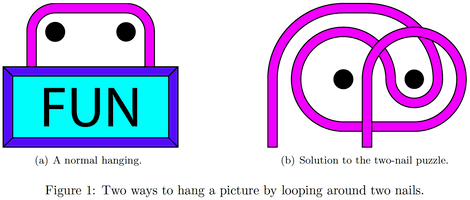
"We consider a more general form of the puzzle where we want the removal of certain subsets of nails to fell the picture. We show that any such puzzle has a solution: for any collection of subsets of nails, we can construct a picture hanging that falls when any entire subset of nails gets removed, but remains hanging when every subset still has at least one unremoved nail. This result generalizes picture-hanging puzzles to the maximum extent possible."
Further figures from the study:
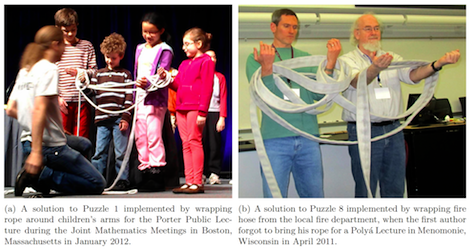
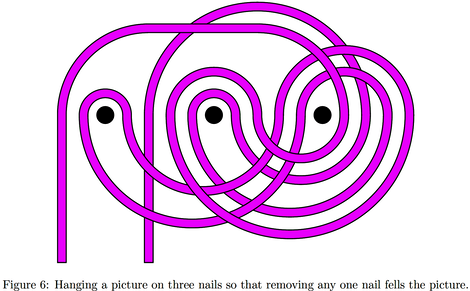

Bye-bye bunny paper: Rabbit phone sex study retracted
Alexander Lerchl sent us this note:
In 2010 you wrote a piece [in the Guardian] on a paper by Salama et al. about the effects of mobile phone electromagnetic fields on rabbits' sex life. I read it just now since it was mentioned in Esowatch.
Actually he published three papers with co-authors who were not informed about the submission of the manuscripts. During an investigation at the host institution it was found that no lab books existed.
Anyway, all three papers have been / will be retracted. I was the person who discovered the problems.
The journal's statement about the retraction notice: http://informahealthcare.com/doi/pdf/10.3109/19396368.2012.677169
The retraction notice itself [also reproduced here, below]: http://onlinelibrary.wiley.com/doi/10.1111/j.1365-2605.2012.01271.x/pdf
The third retraction will follow soon.
Cheers,
Prof. Dr. Alexander Lerchl
Dean for Life Sciences
Professor of Biology
Chair, Committee on Non-Ionizing Radiation,
German Radiation Protection Board (SSK), www.ssk.de
Associate Member, Committee on Publication Ethics (COPE)
www.publicationethics.org
School of Engineering and Science, Research II, Campus Ring 6
Jacobs University Bremen gGmbH
D-28759 Bremen, Germany
BONUS: Retraction Watch's take on the retraction.
BONUS: Where is he now? In the retracted paper, Nader Salama lists his address as: "Professor N Salama, Department of Urology, Alexandria Faculty of Medicine, Alexandria 11111, Egypt." However, he is not now currently listed on that department's web site. In that same paper he also lists an affiliation with the "Departments of Urology, Tokushima School of Medicine, Tokushima City, Japan".
BONUS: An unrelated paper by Salama and Kishimoto: "Unusual trivial trauma may end with extrusion of a well-functioning penile prosthesis: a case report", which includes the statements, about two different patients: "He also reported having bumped his penis into the suitcase of the preceding passenger while boarding an airplane five days prior to presentation"; and "He also described having trapped his penis against a toilet seat while sitting down to defecate four days earlier."

The Ig Nobel show at Imperial College [video]
Here's video of the Ig Nobel show we did at Imperial College London on March 9, 2012. (Imperial College's web site has a better quality video.). This year's show featured Mason Porter, John Hoyland and Stevyn Colgan and Ig Nobel Prize winner Mirjam Tuk—with a special appearance by Professor Andrew George, who recited wretched poetry by the wretched poet William McGonagall. Marc Abrahams did the introductions. This was part of the 2012 Ig Nobel Tour of the UK.

A little gut, on a little chip
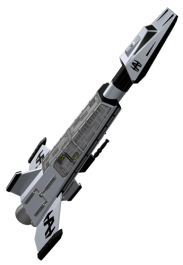 In the old days, people made functioning model airplanes or model rockets (one of which is pictured here, for mental contrast with the idea of a model intestine). Many people still do that. Others have turned inward for nifty things to model:
In the old days, people made functioning model airplanes or model rockets (one of which is pictured here, for mental contrast with the idea of a model intestine). Many people still do that. Others have turned inward for nifty things to model:
"Human gut-on-a-chip inhabited by microbial flora that experiences intestinal peristalsis-like motions and flow," Hyun Jung Kim, Dongeun Huh, Geraldine Hamilton and Donald E. Ingber, Lab Chip, epub 2012. The authors explain:
"Here, we describe a biomimetic 'human gut-on-a-chip' microdevice composed of two microfluidic channels separated by a porous flexible membrane coated with extracellular matrix (ECM) and lined by human intestinal epithelial (Caco-2) cells that mimics the complex structure and physiology of living intestine. The gut microenvironment is recreated by flowing fluid at a low rate (30 μL h−1) producing low shear stress (0.02 dyne cm−2) over the microchannels, and by exerting cyclic strain (10%; 0.15 Hz) that mimics physiological peristaltic motions."
BONUS: Melinda Wenner Moyer's Scientific American report on the general topic:"Organs-on-a-Chip for Faster Drug Development"

Why do pathologists see spaghetti and meatballs?
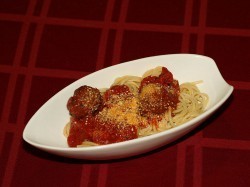
Spaghetti and meatballs – image from Wikimedia Commons
Metaphors are important in education – they facilitate learning and recall. Food-related medical metaphors are no different.
Beyond their educational value, some researchers ("The 'Gourmet' Pathologist", Anna Batistatou , V. Zolota and CD Scopa. Int J Surg Pathol, 2000 8(4):341-342.) have pondered if food-related medical terms reflect the attitudes and peculiarities of their users.
Perhaps pathologists will be hungry when they name disease entities after, for example, spaghetti and meatballs.

April 3, 2012
Professorial arm wrestling in Zurich
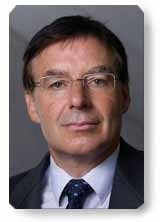 If, at the age of 54, you can still arm-wrestle (and win) against a 23 year old 'superb athlete with impressive strength and stamina', you're doing pretty well. And Professor Didier Sornette Professor on [sic] the Chair of Entrepreneurial Risks, Department of Management, Technology and Economics (D-MTEC), ETH Zurich, Switzerland, can perform just such a feat. Not only that, he can "work 12-14 hours at close to peak brain performance everyday". And, upon returning from international travels to the other side of the globe, he can "perform intense monoski on the lake of Zurich with an outside temperature of 4 C with almost no jetlag and minimal protection and with the enjoyment resulting from the full play of a well-functioning body."
If, at the age of 54, you can still arm-wrestle (and win) against a 23 year old 'superb athlete with impressive strength and stamina', you're doing pretty well. And Professor Didier Sornette Professor on [sic] the Chair of Entrepreneurial Risks, Department of Management, Technology and Economics (D-MTEC), ETH Zurich, Switzerland, can perform just such a feat. Not only that, he can "work 12-14 hours at close to peak brain performance everyday". And, upon returning from international travels to the other side of the globe, he can "perform intense monoski on the lake of Zurich with an outside temperature of 4 C with almost no jetlag and minimal protection and with the enjoyment resulting from the full play of a well-functioning body."
"This may be seen as bragging." – says the professor, but, bragging or not, just how does he do it? Clues are to be found in the professor's recent essay 'Du kannst dein Leben steigern' published in Schweizer Monat, December 2011/January 2012, pp. 38-49. Where the author lays out his seven Guiding Principles – which are :
(1) Sleep (7- 8 hours per night)
(2) Love and sex (as often as possible – typically morning and/or evening)
(3) Deep breathing and daily exercises (5-10 minutes a day)
(4) Water and chewing ("drink your food" and "eat your drinks")
(5) Fruits, unrefined products, food combination, vitamin D and sun exposure and no meat and no dairy (as much as possible each day)
(6) Power foods (onion, garlic, lemon, kiwis, almonds, nuts, dry fruits)
(7) Play, intrinsic motivation, positive psychology and will. (rediscover the Homo ludens in yourself)
Following these guidelines, says the professor, "I claim that it is possible to enjoy every day to the fullest, to play and work with close to 100% of our peak performance, to be continuously 'in the moment' and this for many decades. We should not settle for less."
An English translation of the essay 'Optimization of brain and life performance: Striving for playing at the top for the long run.' can be read in full here.

How Ig Nobellian Dr. Fesmire broke his ankle, told with dolls
Behold Ig Nobel Prize winner Dr. Francis Fesmire tell the tantalizing tale of how he broke his ankle in the Samaria Gorge on the Greek Isle of Crete. Dr. Fesmire accomplished the telling in a mere 14 minutes and 58 seconds, assisted by dolls:
BONUS: Dr. Fesmire's Ig Nobel Prize winning study "Termination of Intractable Hiccups with Digital Rectal Massage"

Marc Abrahams's Blog
- Marc Abrahams's profile
- 14 followers


